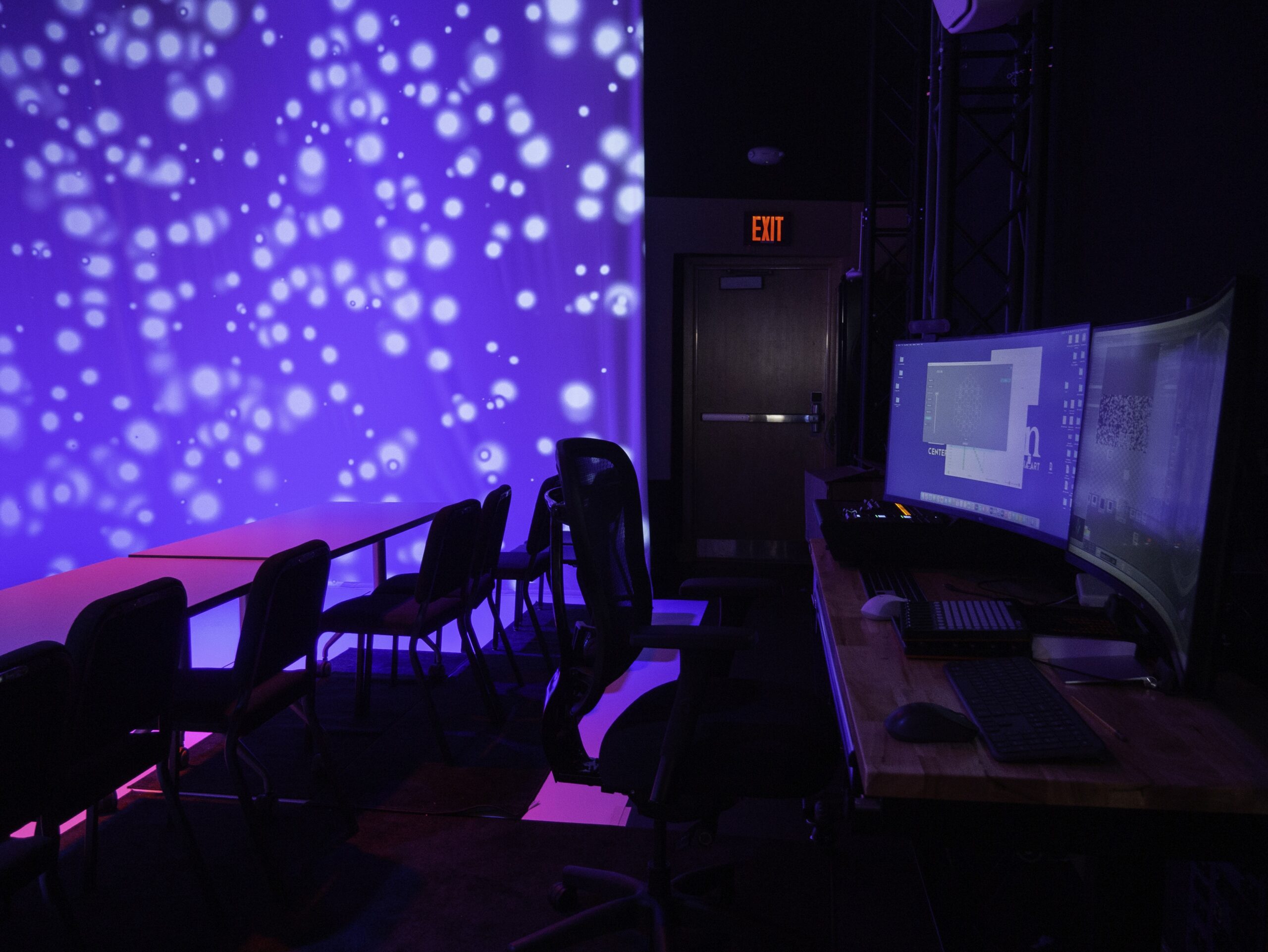Electronic music space in Studzinski provides innovative performance venue but limits orchestra practice space
April 11, 2025
 Isa Cruz
Isa CruzThe newly opened electronic music room in Studzinski Recital Hall is equipped with computers for visuals and sound, speakers and microphones, projectors, soundproofing and a white dance floor, which requires the room’s visitors to leave their shoes—and preconceptions about music—at the door.
The room has been operational since the start of the spring semester, and the official opening party for the room took place in March, but the design had been in the works for much longer. Assistant Professor of Digital Music Badie Khaleghian advocated for the design of the room as a condition of his hiring in 2024.
“We had a small electronic music room in Gibson Hall, but it’s nothing close to what we have now,” Khaleghian said. “This was actually my design. How everything looks and all the technology in there, I had a chance to choose. I also use the space as my own research lab.”
With the space’s modern design and advanced technology, students can incorporate electronic music and unique performances. The small room ensures that audience members are more involved than typical recitals allow. Just this week, the space hosted a listening party for a new collaborative album with Director of Jazz Ensembles and Lecturer in Music Kate Campbell Strauss.
“In terms of performances, historically, there is always, in my opinion, a barrier between the performance and the audience. And there is physically a gap between where the performers typically are and where the artists are,” Khaleghian said. “These barriers can be broken, bringing the audience in.… Our cap is about 30 people, but it’s great for intimate projects.”
Khaleghian teaches his electronic music courses in the room, and the College’s two electro-acoustic music ensembles practice there almost every night. Noah Saperstein ’25, a student of electronic music, found the space particularly conducive to class experience.
“I learned a lot about a genre of music that I’m interested in listening to casually, and I learned a lot about how people make it,” Saperstein said. “That’s where my classroom was, and it maybe was a little small, but they had good stuff in there.”
However, students who perform in other music ensembles at the College, including orchestra, concert band and choir expressed frustration that the room is no longer available as an additional practice and instrument storage space, reflecting on the already limited space in Studzinski.
“I think it was a really important space for the orchestra, maybe the band and also the choir to warm up, rehearse and leave their stuff before concerts and rehearsals. Now we have to leave our things in the hallway,” violinist Jonathan Lerdau ’25 said. “We also used it for sectional rehearsals, so now we have lost that space. And chamber music groups would [also] rehearse in there.”
Khaleghian noted that the Studzinski space was one of the only available location for an electronic music room, noting that it was already partially soundproofed and has high ceilings which enhance visual effects. Khaleghian reflected further on the smooth integration of the room’s technology.
“The beauty of the space is multimedia, live performance and lights can all be controlled easily. The space can also be used for recording,” Khaleghian said. “My philosophy is that the room is an instrument. The students learn how to compose for the instruments, and they use all the elements of the room to create their composition.”

Comments
Before submitting a comment, please review our comment policy. Some key points from the policy: